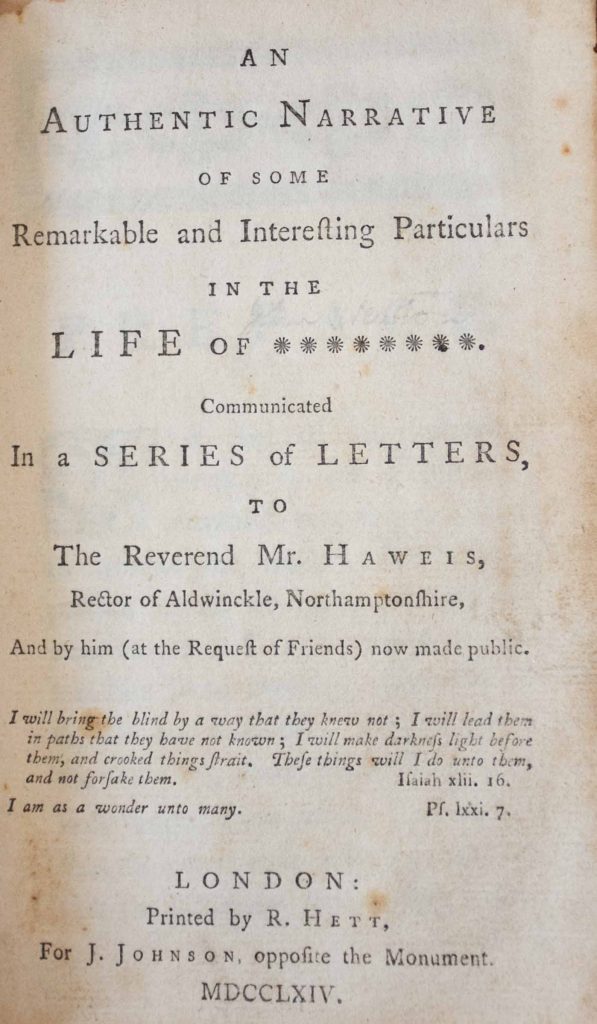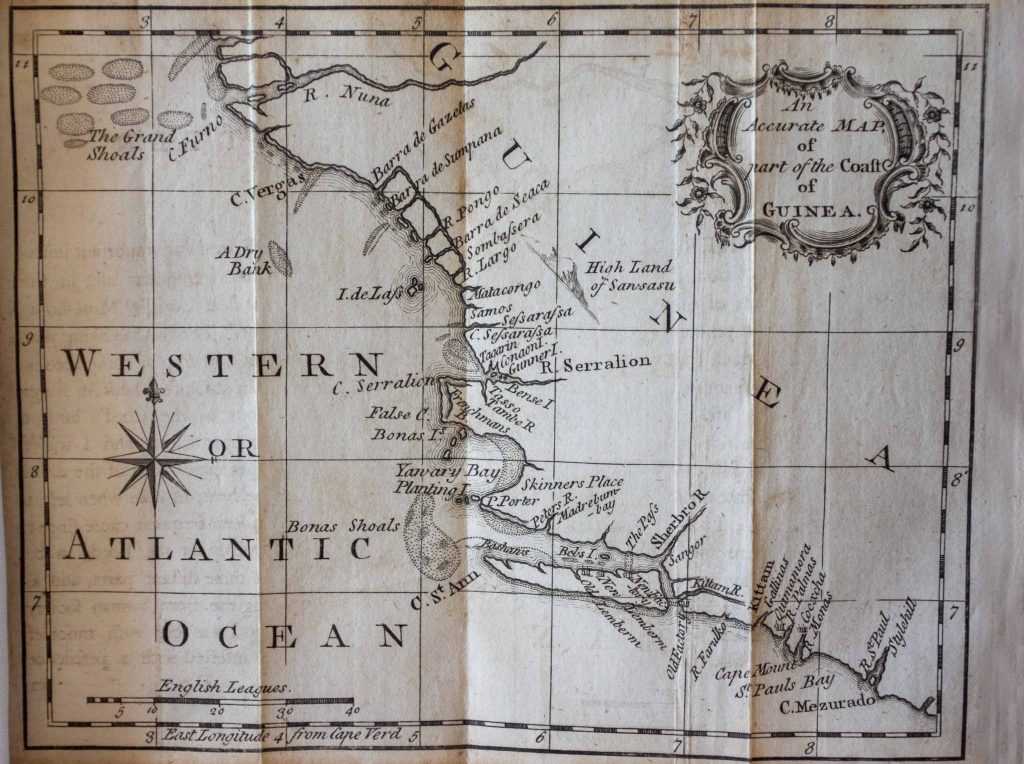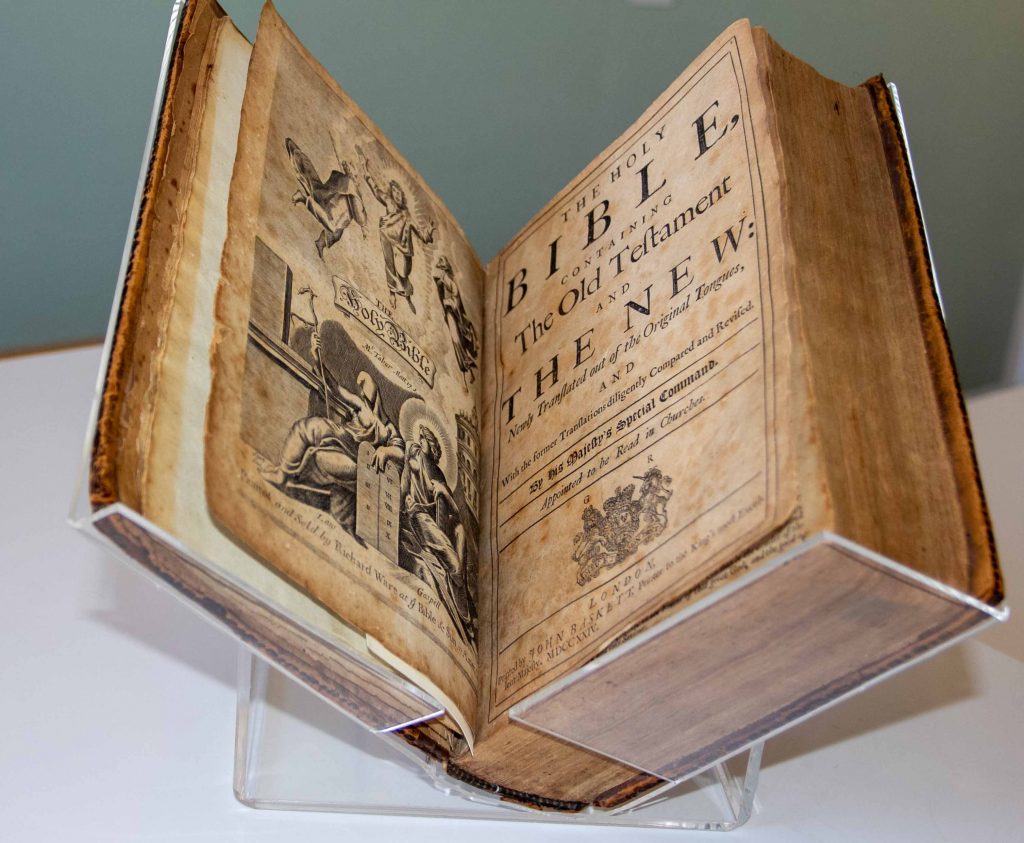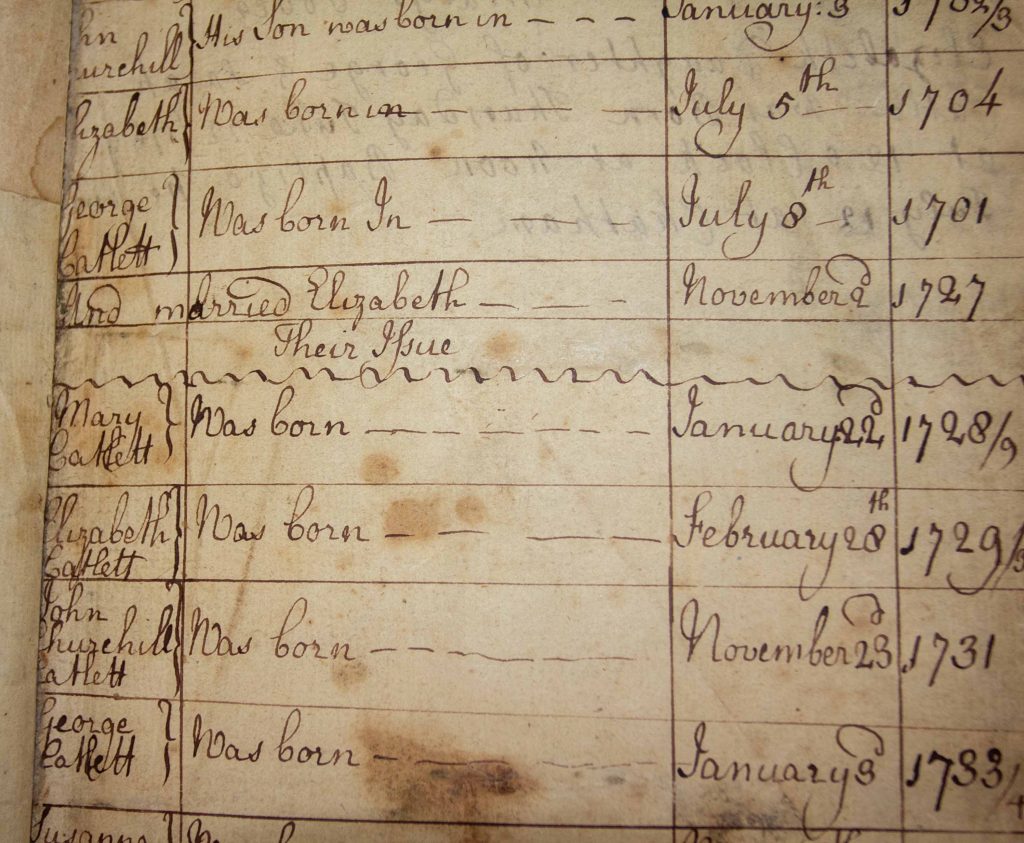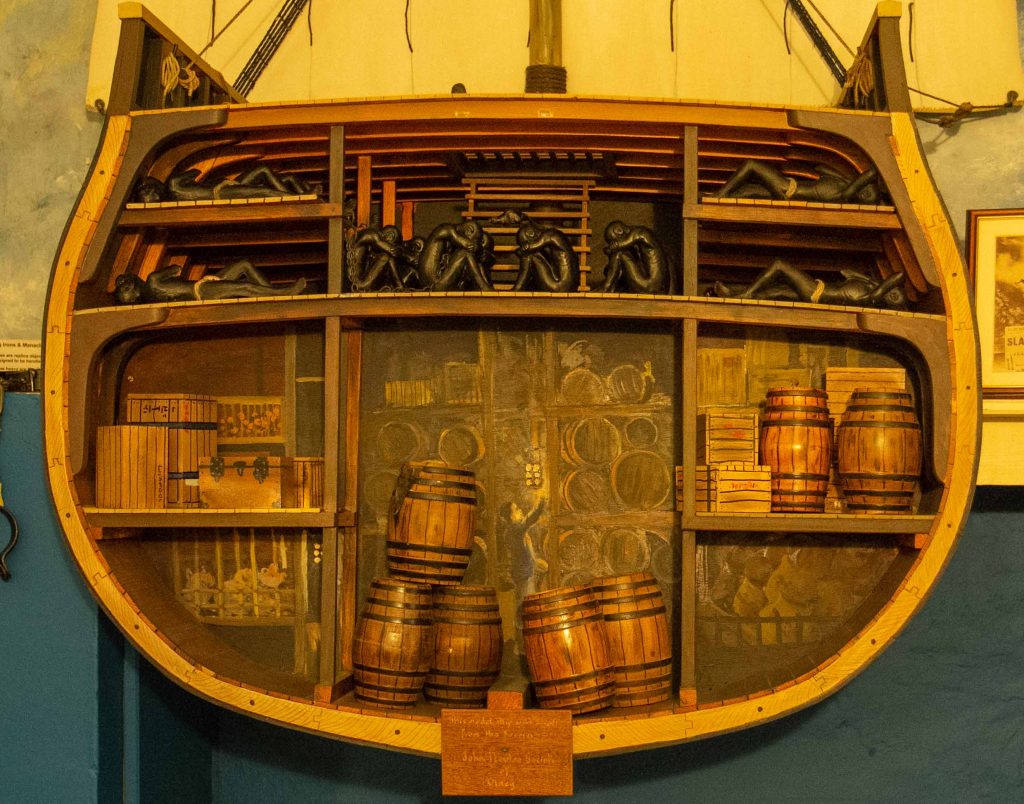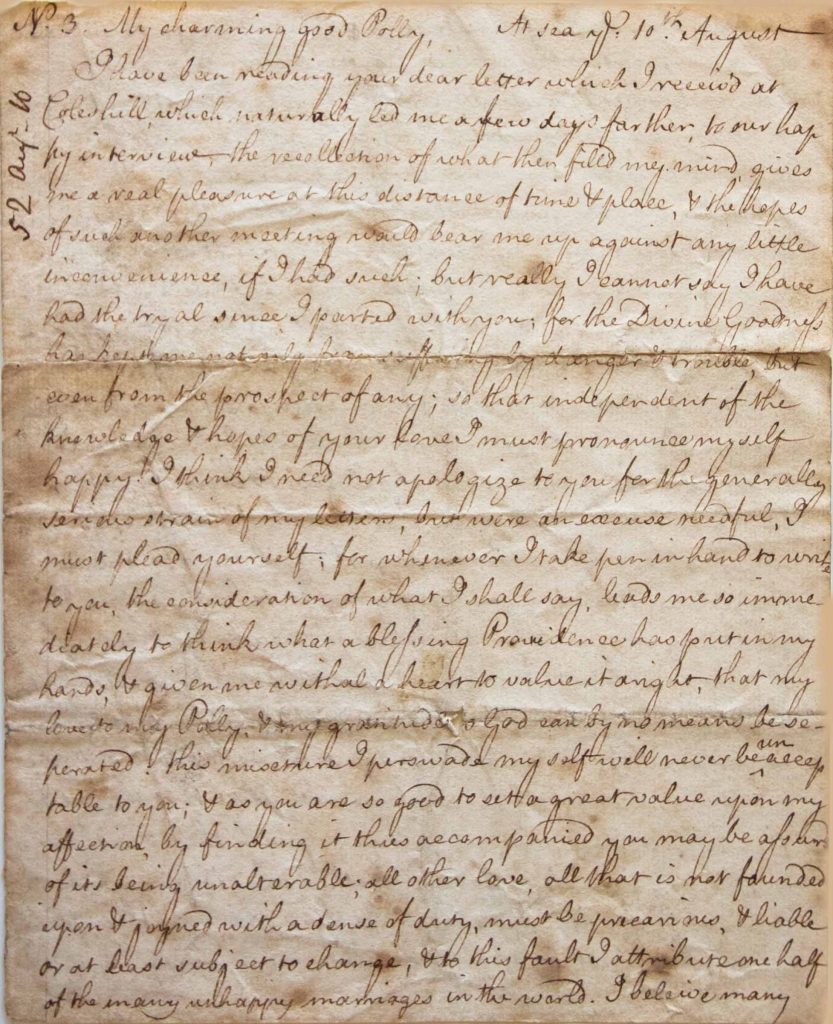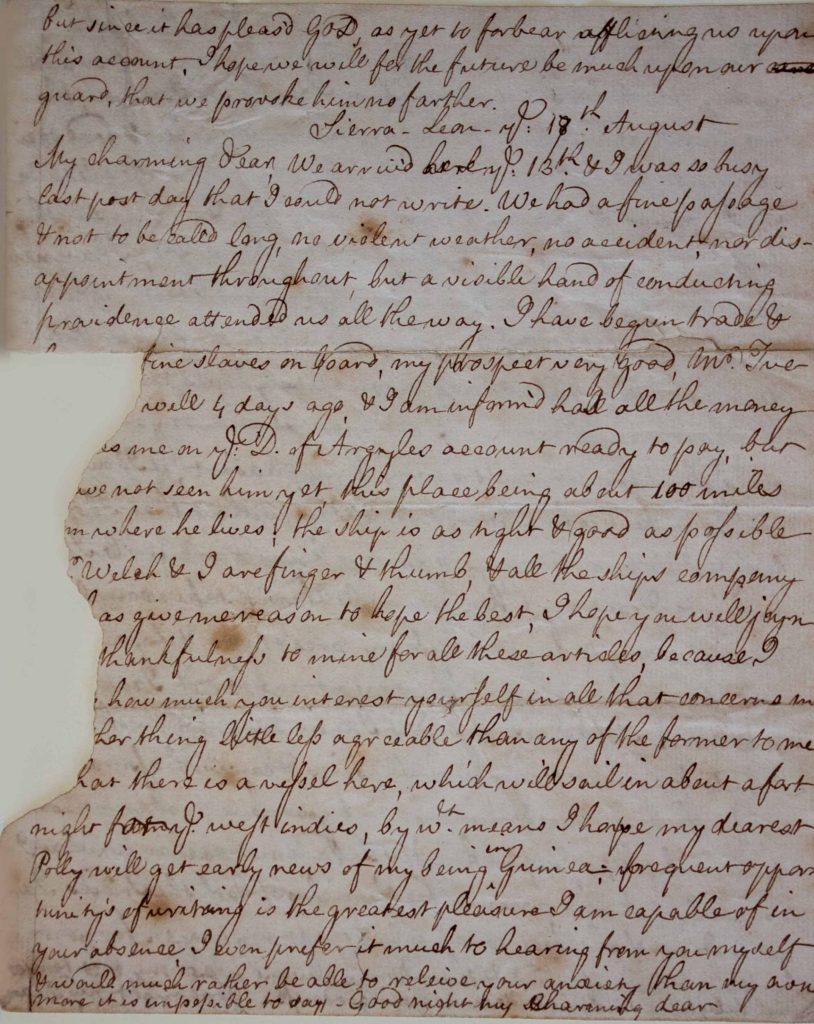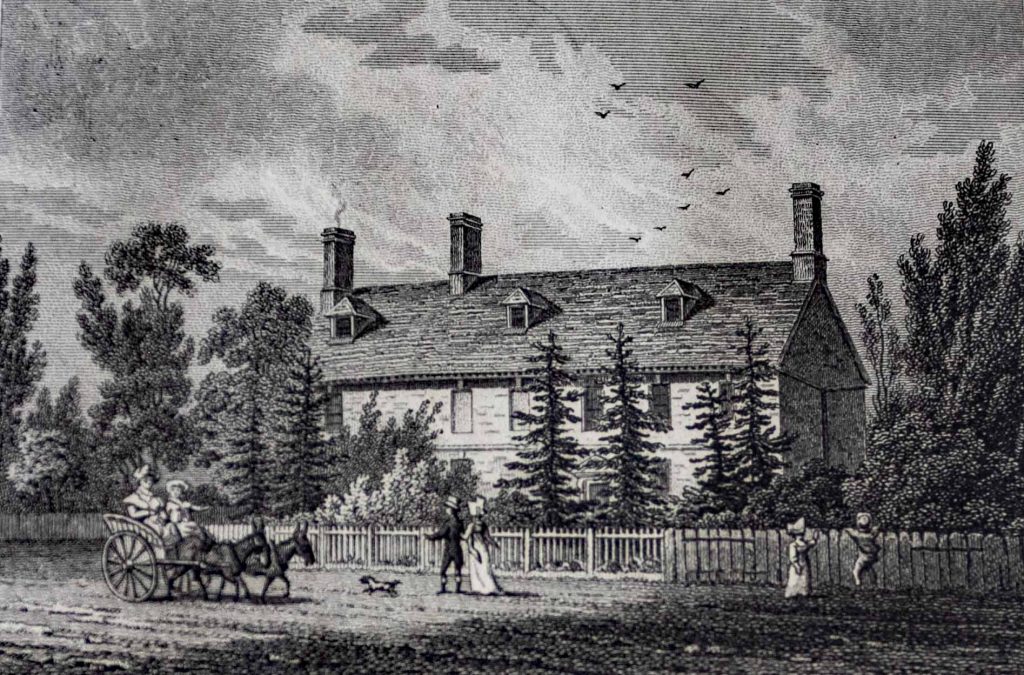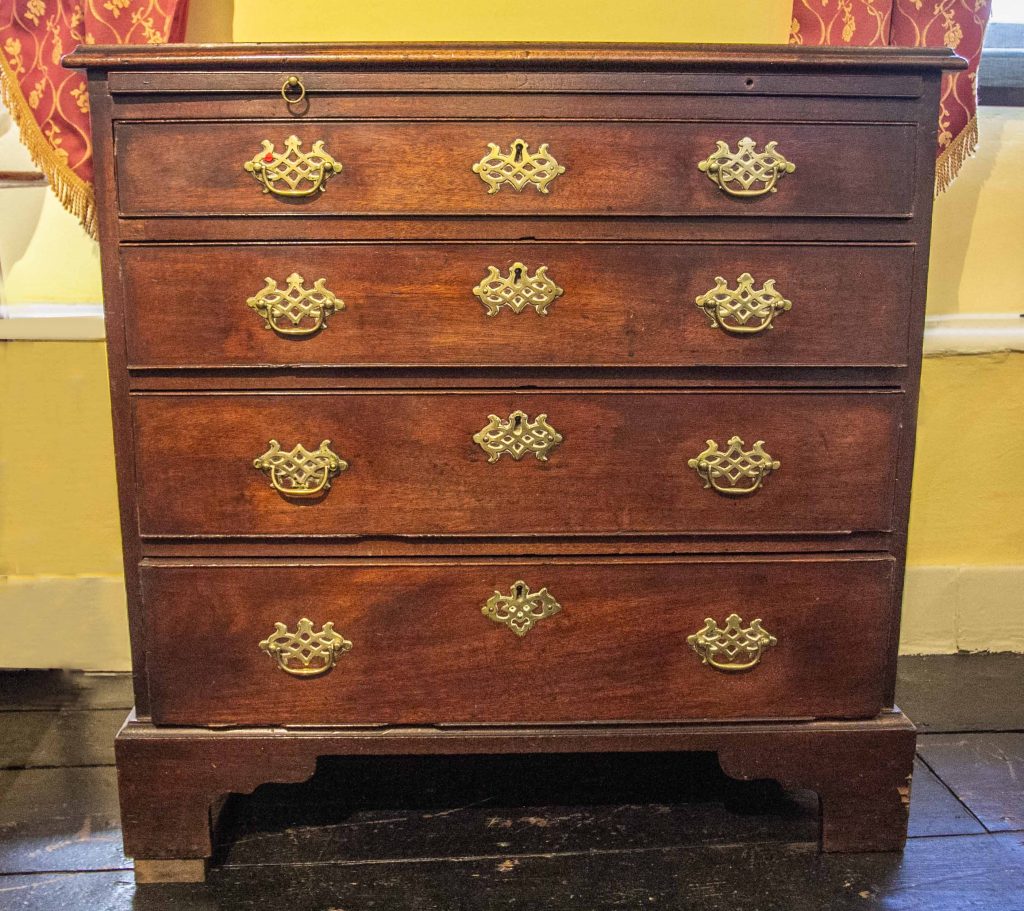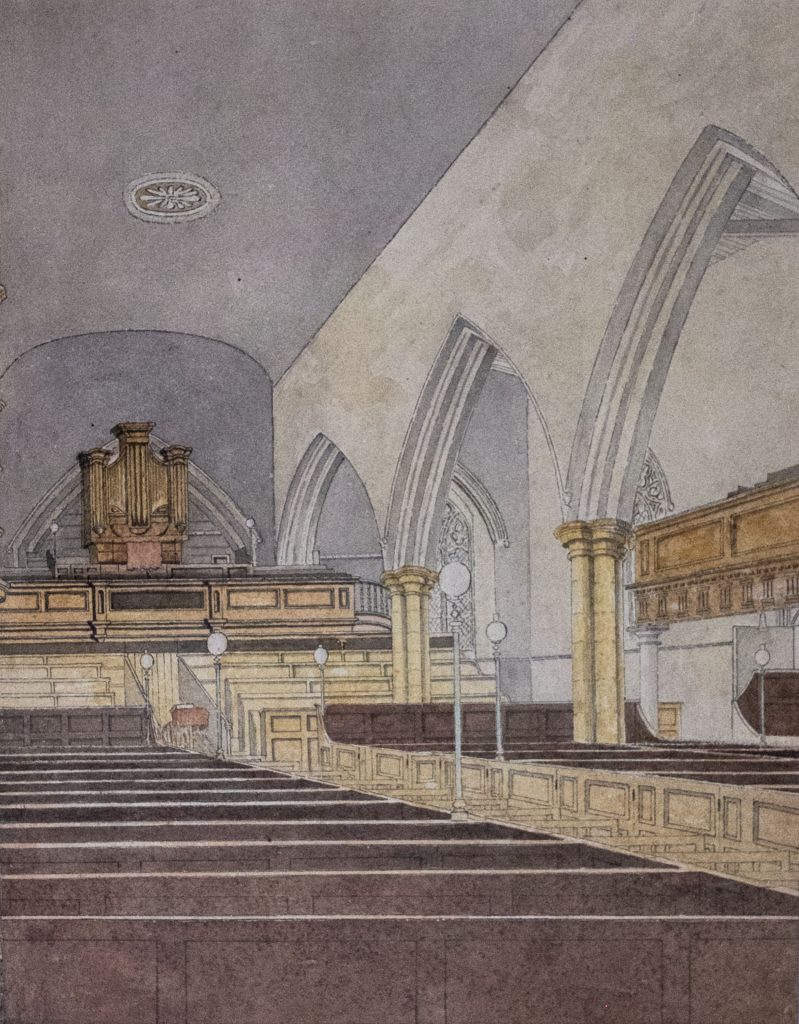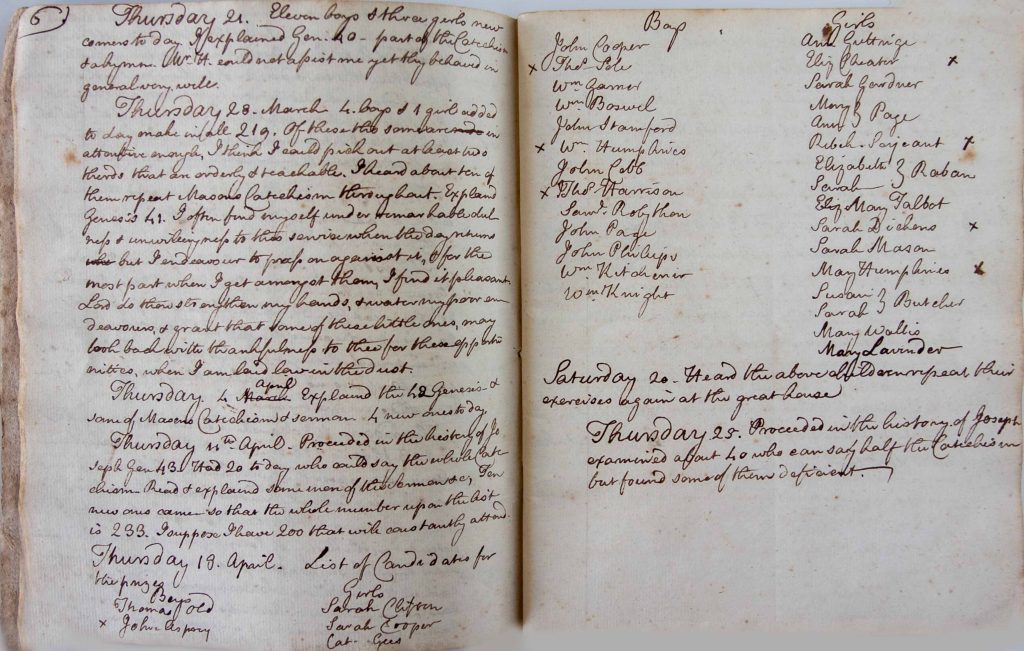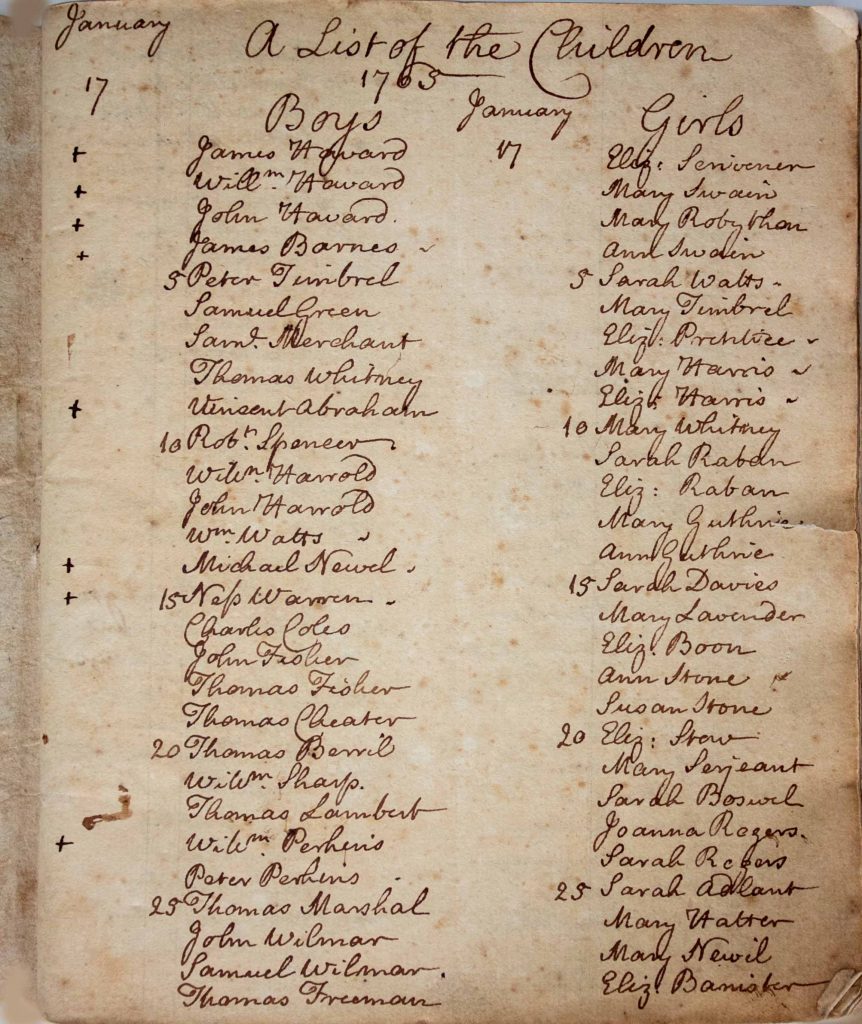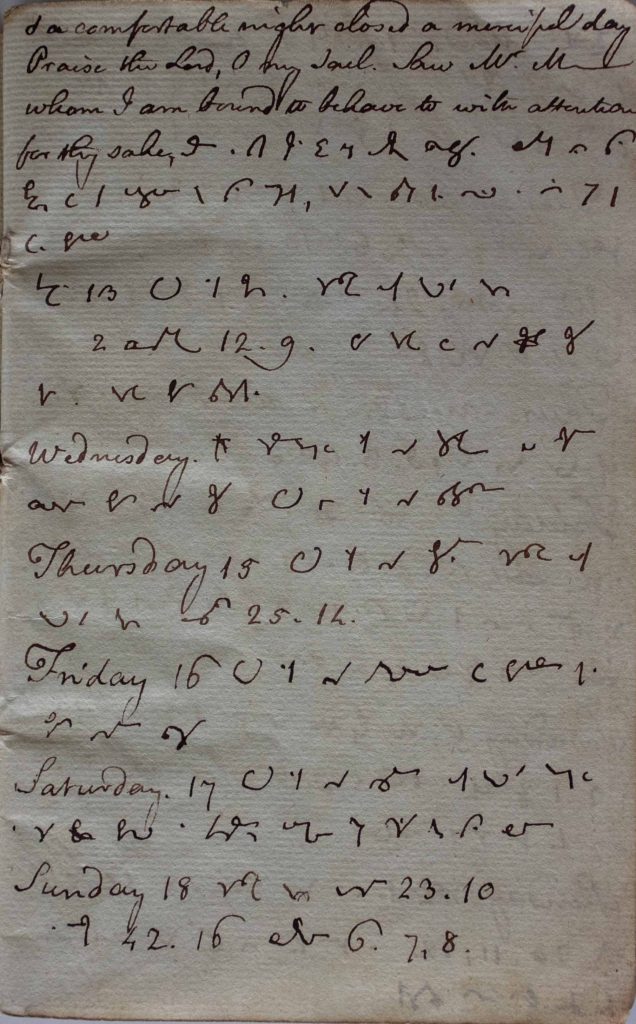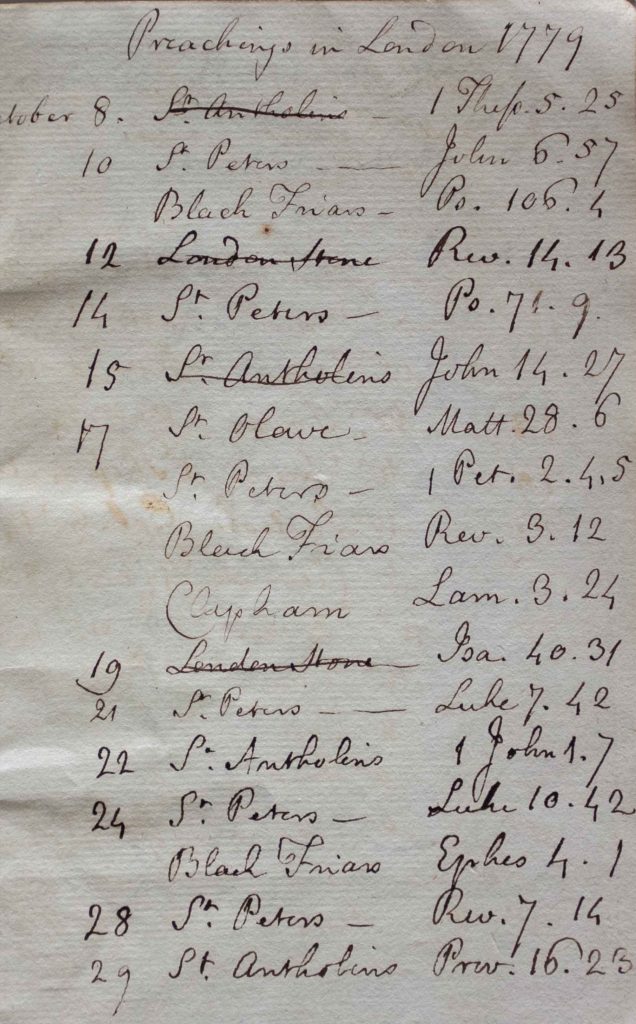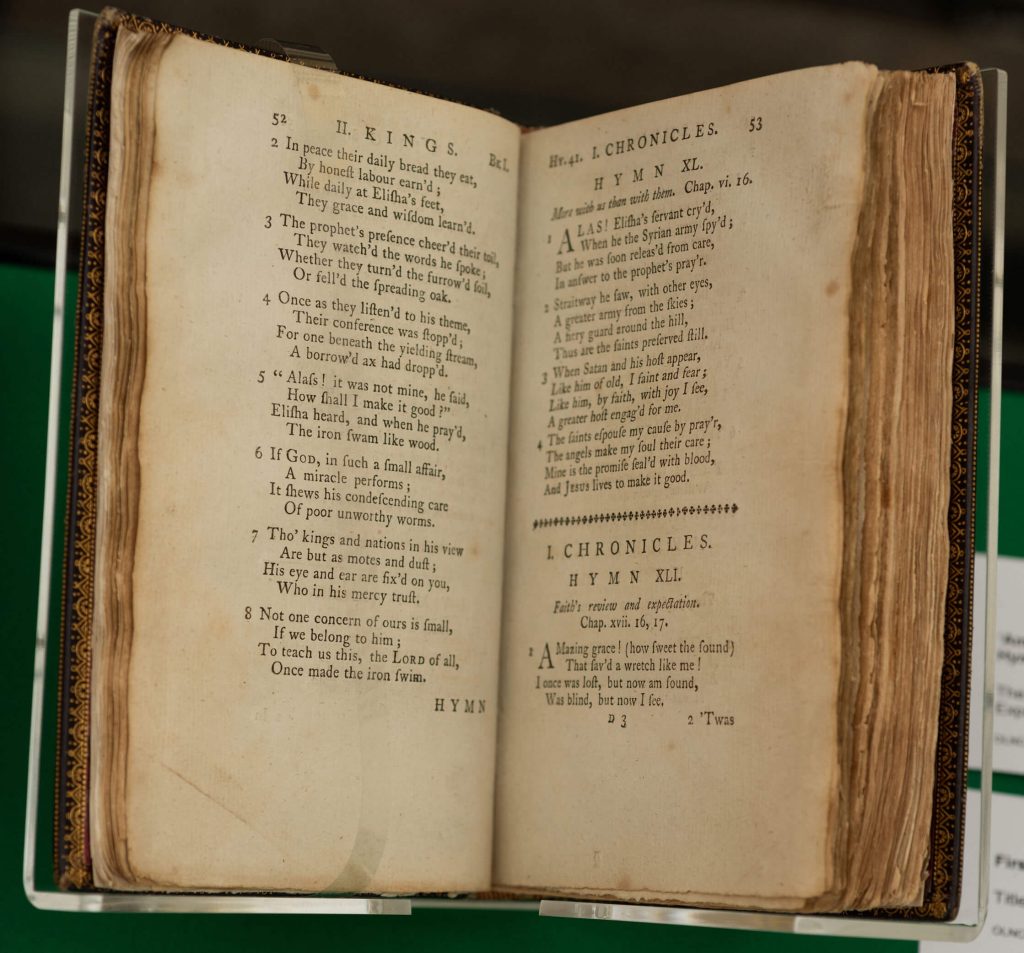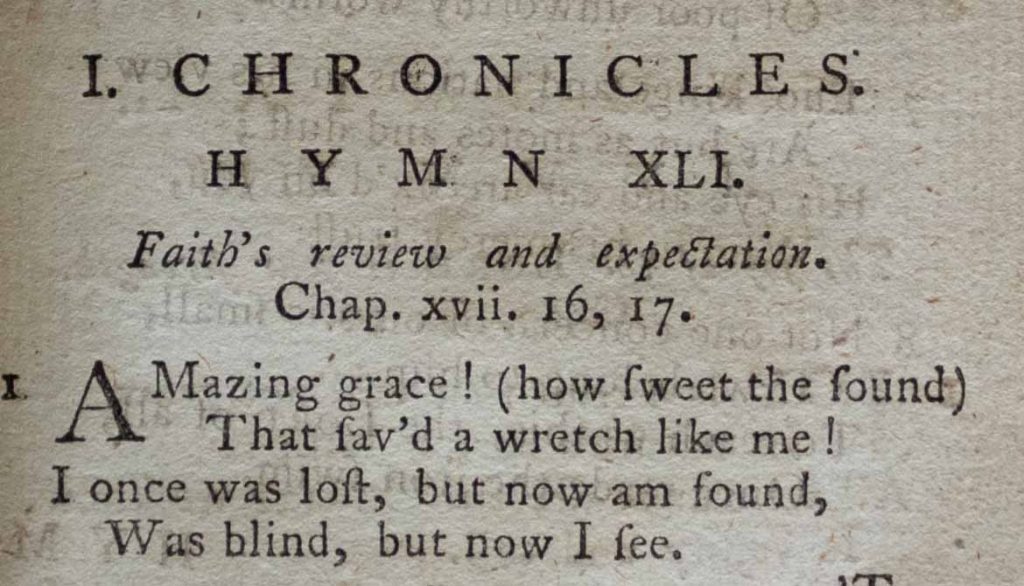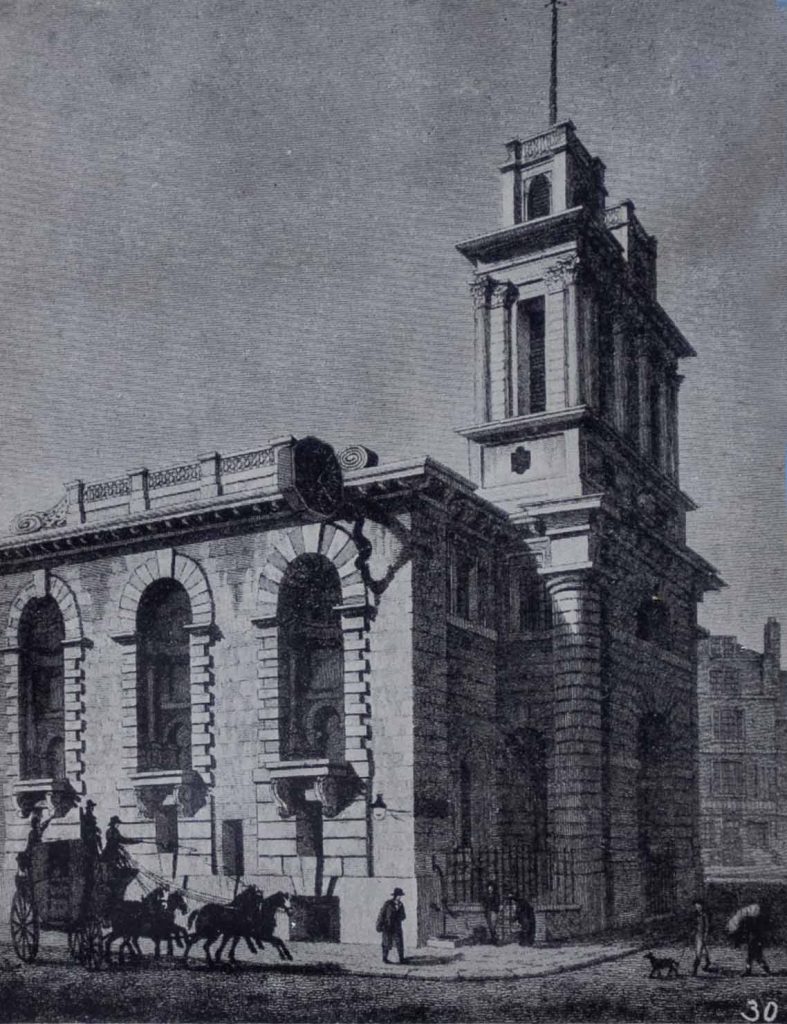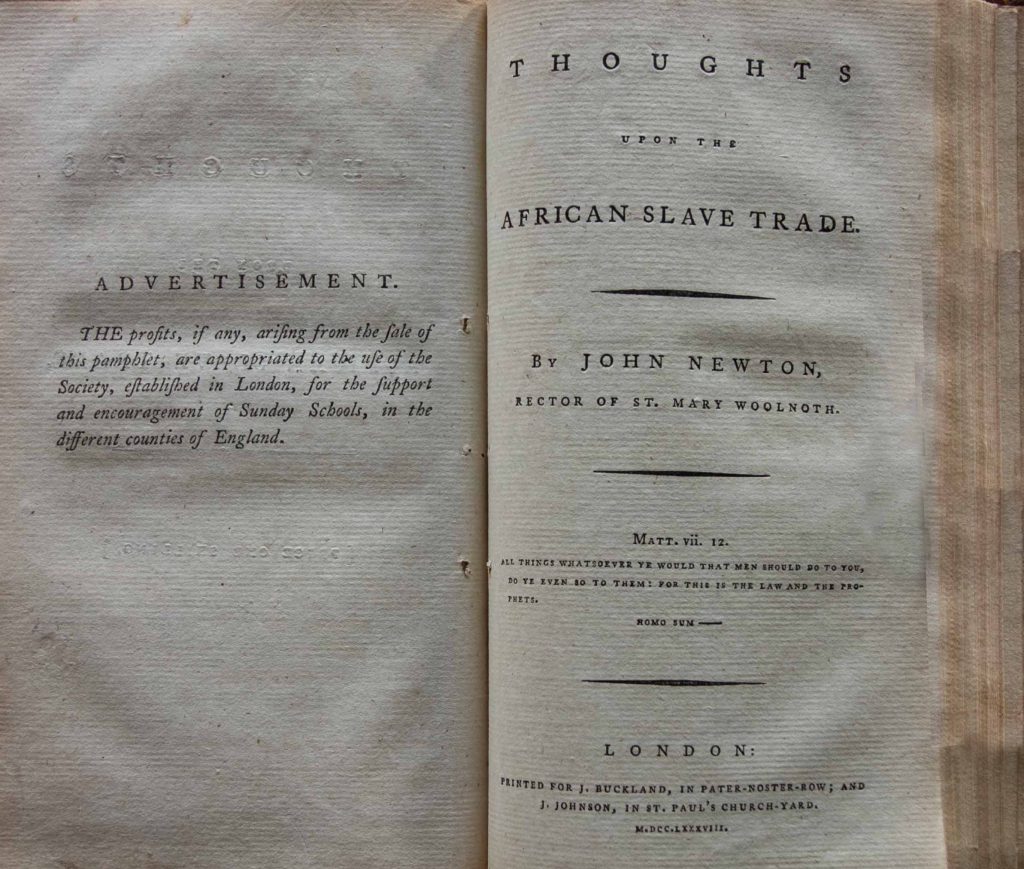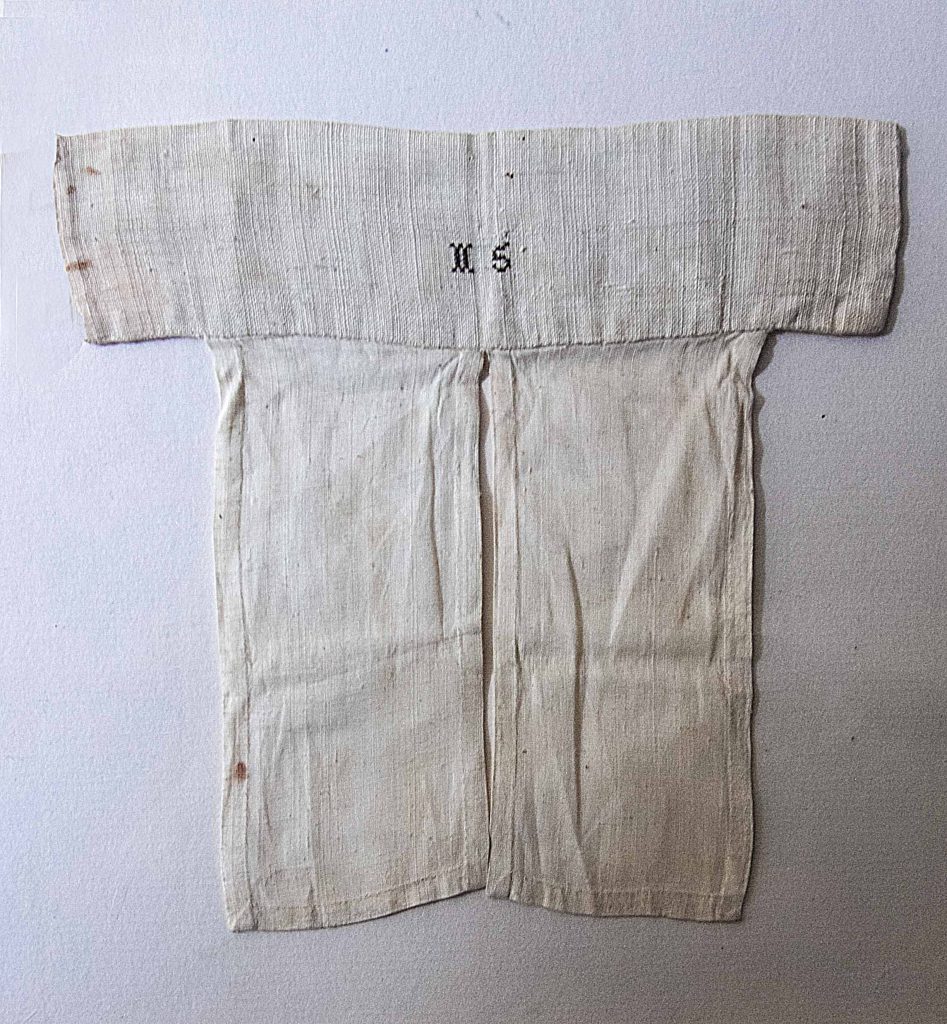Virtual Exhibition
20 items from the collection at the Cowper & Newton Museum in Olney which explore some key moments in the life of John Newton .
Newton’s early years at sea and how he became involved in the trafficking of slaves, an involvement to which he later attested as part of his contribution to the campaign to abolish the slave trade.
How a storm at sea began a journey of faith and inspired a hymn.
His arrival in 1764 at Olney with his beloved wife Mary to be curate at the parish church of St Peter & St Paul, and how he came to write his world-famous hymn ‘Amazing Grace’.
 This online exhibition is part of Amazing Grace 250, a project and programme supported by the National Lottery Heritage Fund to commemorate the 250th anniversary of the writing in Olney of the hymn Amazing Grace.
This online exhibition is part of Amazing Grace 250, a project and programme supported by the National Lottery Heritage Fund to commemorate the 250th anniversary of the writing in Olney of the hymn Amazing Grace.
Early life
‘An Authentic Narrative’
John Newton’s autobiography
published in 1764 by Joseph Johnson
An Authentic Narrative was John Newton’s own account of his early life, published in letter form in 1764. The book was all at one and the same time a love story, an adventure book, and a tale of redemption and Christian mercy.
It includes the history of his slave trading voyages in Africa, and the dramatic tale of the storm at sea in which he almost died.
A fold out map of the coast of Guinea, West Africa
1764 edition of ‘An Authentic Narrative’
Copies of this map were bound into early copies of An Authentic Narrative. This area of West Africa, bulging out westwards into the Atlantic, was known as the Guinea coast.
It was a largely unexplored territory by Europeans, full of river estuaries and jungle.
The Catlett Family Bible
This Bible, printed in 1724, belonged to the Catlett family. Newton married Mary Catlett, known affectionately as Polly, in 1750.
Mary’s brother George initially inherited the Bible from their parents. It may have come to Olney with his orphaned daughter when she was adopted by John and Mary.
Birth of Mary Newton recorded in the Catlett Family Bible
Mary Newton’s parents, George and Elizabeth Catlett, used the flyleaf to record their own birth dates and their marriage in 1727, followed by the births of their children.
Polly, was the eldest of four children, all of whom survived into adulthood. The births of her nephews and nieces are also faithfully recorded, but several died young.
Model of a slave ship in cross-section, showing how enslaved people were transported to the Americas.
Timber structure. 2002
This model showing the interior of a slave ship was constructed for the museum in 2002 by the University of Northampton. It is based on contemporary descriptions and illustrates the conditions in which enslaved Africans were forced to cross the Atlantic. Overcrowding and disease killed many. Others were hurled overboard to allow ship owners to claim an insurance value.
As a slave ship captain, Newton faced plotting and insurrection, not only from the Africans but also from his crew. While at sea he daily recorded such incidents in his logbook.
A detail from the model slave ship cross section
Olaudah Equiano describes conditions on board in his 1789 autobiography, The Interesting Narrative of the Life of Olaudah Equiano.
“I was soon put down under the decks, and there I received such a salutation in my nostrils I had never experienced in my life: so that with the loathsomeness of the stench and crying together, I became so sick and low that I was not able to eat”.
Newton’s letter to his wife, written at sea
10th August 1752 onwards
This is one of many letters that Newton sent to Mary from the Duke of Argyle, the first of the two slave trading ships he commanded.
Much of the letter is concerned with his own faith and his love of his wife. He also tells her about his recent buying of slaves and his expected profit.
Newton’s letter to his wife, written at sea, page 2
Newton left his slave trading career in 1754 after a third voyage which ended with his delivering 87 slaves to St Kitts.
There, he met a Christian Captain of a merchant ship, Alexander Clunie, who introduced Newton to the idea of grace, encouraged him to pursue a life of social prayer and to talk about his faith.
Storm at sea, from ‘Memoirs of the Rev. John Newton with General Remarks on His Life, Connexions and Character’
First published 1808
The illustration on the title page of this biography of Newton by his friend Richard Cecil recalls the storm that Newton survived in 1748.
For Newton the storm was a defining experience, teaching him that salvation came from God. He frequently returned to the story in his preaching and letters. It is reflected in the words of his hymn Amazing Grace.
Coming to Olney
View of Olney Church, with Great House and Mill
James Andrews (1734 – 1817)
Oil on canvas
54 x 42cm
This view, painted in oils by a local artist James Andrews, shows the parish church of St. Peter and St. Paul as it would have been when Newton arrived as Olney’s curate in 1764.
The large house to the side of the church was known as the Great House and belonged to Newton’s patron, Lord Dartmouth. It was uninhabited at the time and Newton was allowed to use it for church meetings.
Market Place, Olney
Artist Unknown
Watercolour on paper
14 x 20cm
This watercolour, which was probably painted around 1800, shows the Market Place around that time.
When Newton lived in Olney, the market place was filled with other buildings. Olney was a small country town of perhaps 500 houses and 2000 people. Many of them were agricultural workers and lace makers. Poverty and disease were rampant.
Olney Vicarage
James Storer
Engraving on paper
Circa 1820
William Legge, 2nd Earl of Dartmouth, had the vicarage rebuilt for the Newtons in 1766. Although Newton arrived in Olney as curate on a modest stipend of £30 per year, he was vicar in all but name. He was helped by John Thornton, a director of the Bank of England and who was also a friend of Lord Dartmouth. Thornton wrote to Newton offering £200 per year towards his expenses, ‘Be hospitable and keep an open house for such as are worthy of entertainment – help the poor and needy’.
John Newton’s Writing Desk
Oak
80L x 49D x 77cm
This piece of furniture, with a sliding writing shelf above the drawers, belonged to Newton while he was living at Olney vicarage. Newton wrote tirelessly, drafting sermons and hymns, recording his life and thoughts in his diary and corresponding with friends and fellow clergymen.
He subsequently published many of his pastoral letters. When he first arrived in Olney he was working on a lexicon of ancient Greek and a history of the early church.
A guest at the vicarage in 1766: Samson Occom
Photograph of an engraved print
Credit National Portrait Gallery
Samson Occom was one of many visiting preachers to stay with the Newtons in Olney.
This engraved portrait is dated 1768. Occom was a native American and one of the first of the Mohegan tribe to be ordained. He visited England to preach and raise funds for an Indian charity school. The money he raised was then diverted to the founding of Dartmouth College for the colonists.
Interior of Olney Church, showing the gallery constructed for Newton
Watercolour on paper
Walter Pennington Storer, 1812-1867
When Newton first came to Olney, his preaching attracted a large congregation to the church. Newton proposed the construction of a large gallery on the north side of the church, a plan approved by his patron Lord Dartmouth. The gallery has since been dismantled.
In Olney John Newton was a dedicated parish minister, visiting the homes of parishioners and setting up regular prayer and faith meetings for children and adults.
John Newton's notebooks
An example of John Newton’s shorthand
Circa 1760
Newton often used small notebooks with marbled paper wrappers, mostly for sermon notes and drafts. He wrote with speed and taught himself an early form of shorthand.
This notebook uses a form of the English universal shorthand system invented by John Byrom and also used by John and Charles Wesley.
John Newton’s Preaching in London
1779
Newton sometimes scribbled random lists and diary notes in his notebooks, in amongst the preparatory notes he made for sermons.
This list of the London churches where he preached in the year before he left Olney reflects the energy he brought to his life as a Gospel Minister.
The ‘Olney Hymns’
First published in London in 1779
The Olney Hymns were the result of a collaboration between John Newton and his neighbour William Cowper that began when Cowper moved to Olney in 1767.
The eventual publication in 1779 included 67 hymns by Cowper and 281 by Newton, including Amazing Grace. It was Newton who prepared the hymns for publication.
‘There is a style and manner suited to the composition of hymns, which may be more successfully, or at least more easily attained by a versifier, than by a poet. They should be Hymns, not Odes, if designed for public worship, and for the use of plain people.’
Some of the hymns are still popular today, including
Glorious things of thee are spoken’
‘God moves in a mysterious way’
‘How sweet the name of Jesus sounds’
‘Oh! for a closer walk with God’
‘Amazing Grace’
‘The Hymns are distributed into three Books. In the first I have classed those which are formed upon select passages of Scripture, and placed them in the order of the books of the Old and New Testament. The second contains occasional Hymns, suited to particular seasons, or suggested by particular events or objects. The third Book is miscellaneous, comprising a variety of subjects relative to a life of faith in the son of God, which have no express reference either to a single text of Scripture, or to any determinate season or incident.’
Preface from the ‘Olney Hymns’
The first verse of ‘Faith’s review and expectation’
John Newton’s Amazing Grace is now known as the most recorded and most sung hymn in the world.
The hymn was written to accompany Newton’s sermon for New Year’s Day 1773. This was on the theme of God’s mercy as outlined in the biblical passage from I Chronicles 17:16-17. King David prays ‘Who am I Lord and what is my family that you have brought me thus far?’ Newton found parallels with his own life, saved from sinfulness and the storm at sea.
Leaving for London
Church of St Mary Woolnoth, City of London
circa 1800
In late 1779 Newton left the parish of Olney to become a rector of a prominent parish in the City of London.
For sixteen years in Olney he had remained as curate although his reputation as writer and preacher though had spread far more widely.
His patron and admirer John Thornton helped him secure his new parish, but even so there were questions in the House of Lords about the appointment. There were objections to his Evangelical sympathies.
‘Thoughts upon the African Slave Trade’
John Newton
1788
In January 1788 Newton published his pamphlet, Thoughts upon the African Slave Trade, in which he described in detail the cruelties inflicted on enslaved Africans and the immorality of such a trade.
A few years prior to publication, Newton had become reacquainted with and provided spiritual support to the young Member of Parliament, William Wilberforce. Just weeks before publication, Wilberforce announced to the House of Commons his intention to raise a bill to abolish the slave trade. Newton was soon called to give evidence to Parliament.
Portrait of Revd. John Newton
Oil on canvas
W.S. Wright
Circa 1900
91 x 82cm
This portrait of Newton was painted by the father of the founder of the Cowper & Newton Museum, Thomas Wright, for the museum’s opening in April 1900.
Wright based it on engravings of the only formal portrait of Newton. This was a 1788 study in pastels by the artist John Russell which is owned by the Church Mission Society.


